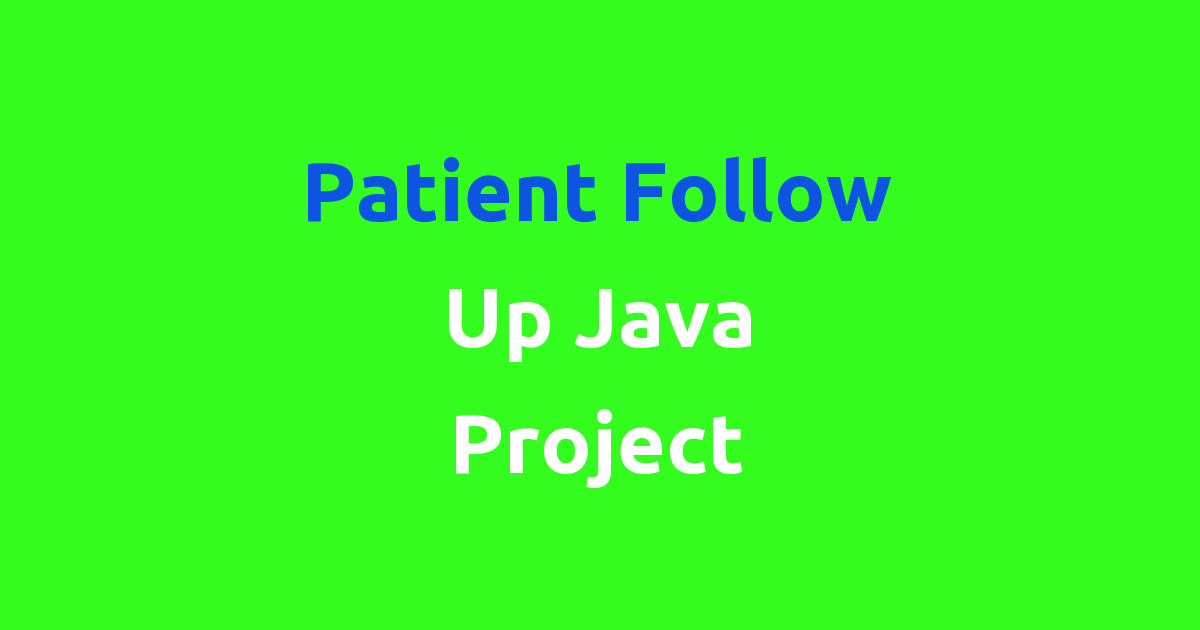Java project for patient follow-up.
Introduction
In the healthcare industry, patient follow-up is crucial for ensuring that individuals receive the necessary care and support after their initial treatment. However, traditional methods of tracking patient follow-up can be time-consuming and inefficient. To address this issue, our team has developed a Java-based patient follow-up system that aims to streamline the process and improve patient outcomes.
Problem Statement
The current methods of tracking patient follow-up in healthcare facilities rely heavily on paper-based records and manual updates. This approach is prone to errors and can lead to delays in scheduling follow-up appointments, which can have a negative impact on patient care. Additionally, healthcare providers often struggle to keep track of patients who require frequent follow-up visits, leading to gaps in care and potential complications.
Existing System
The existing system for patient follow-up typically involves healthcare providers manually entering patient information into a database and scheduling follow-up appointments based on the information available. This process can be time-consuming and prone to errors, as it relies on manual data entry and updating. Furthermore, the existing system may not have the capability to send automated reminders to patients about upcoming appointments, leading to missed appointments and delays in care.
Disadvantages
Some of the disadvantages of the existing patient follow-up system include:
1. Time-consuming manual data entry
2. Lack of automated reminders for patients
3. Difficulty tracking patients who require frequent follow-up
4. Potential for errors in data entry and updating
Proposed System
Our proposed system for patient follow-up aims to address these issues by automating the process and providing healthcare providers with a user-friendly platform to track patient follow-up. The system will utilize Java programming language to create a web-based application that can be accessed by healthcare providers and patients alike. The system will allow for automated scheduling of follow-up appointments, reminders for patients, and real-time tracking of patient follow-up.
Advantages
The advantages of our proposed patient follow-up system include:
1. Automated scheduling of follow-up appointments
2. Real-time tracking of patient follow-up
3. Automated reminders for patients about upcoming appointments
4. User-friendly interface for healthcare providers
Features
Some of the key features of our patient follow-up system include:
1. Secure login for healthcare providers and patients
2. Automated scheduling of follow-up appointments based on patient information
3. Real-time tracking of patient follow-up status
4. Automated reminders for patients via email or text message
5. Reporting and analytics tools for healthcare providers to track patient follow-up outcomes
Conclusion
In conclusion, our Java-based patient follow-up system aims to improve the efficiency and effectiveness of patient follow-up in healthcare facilities. By automating the process and providing healthcare providers with a user-friendly platform to track patient follow-up, we believe that our system can help to improve patient outcomes and reduce the burden on healthcare providers. We are confident that our system will make a positive impact on the healthcare industry and look forward to implementing it in real-world settings.

